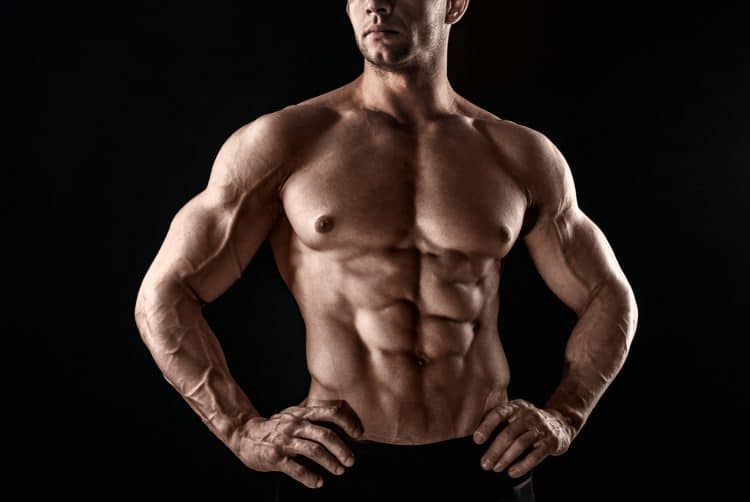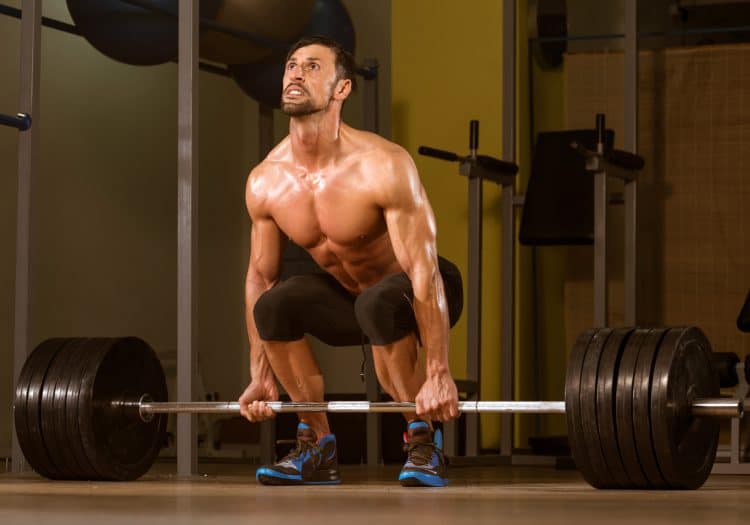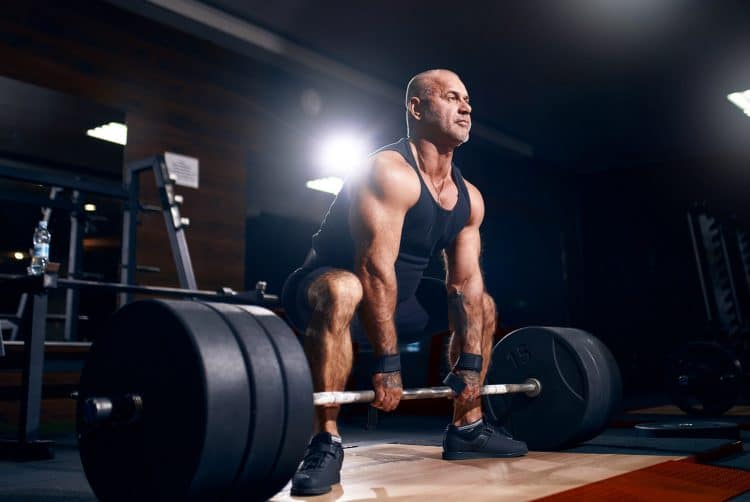Hitting the gym every day at the same time for the same duration and performing the same exercises can take its toll on you both physically and mentally. It can feel redundant and boring.
Repetitive workouts can do more harm than good. How is that, you ask? For one, performing the same exercises over and over can lead you to a training plateau, and breaking through the overhead ceiling is harder than avoiding one. Plus, boring workouts can make you lose your motivation to train, which is usually the first step in dropping off the fitness lifestyle.
Enter advanced training techniques. Advanced training techniques like supersets help take your gains to the next level by boosting the aerobic intensity of your regular lifting program, which further helps you achieve muscular hypertrophy. [1]
Muscle hypertrophy represents an enlargement of total muscle mass and cross-sectional area. Advanced training programming like supersets combined with a balanced diet and recovery program can put you in an anabolic state. Anabolism produces growth and separation of cells and an increase in muscle size and definition. [2]
Besides their muscles building capabilities, supersets can help you burn calories and reduce the total time you need for each workout. It can be useful for people who cannot spare 60-90 minutes from their busy schedules to train every day.
This article covers every aspect of a superset, including what they are, how to perform them, and the benefits and cons of using this advanced training principle in your workout regimen.
Level Up Your Fitness: Join our 💪 strong community in Fitness Volt Newsletter. Get daily inspiration, expert-backed workouts, nutrition tips, the latest in strength sports, and the support you need to reach your goals. Subscribe for free!
Related: Five Powerlifting Training Methods That Bodybuilders Should Use
What is a Superset?
While a conventional training program has you perform all the sets of an exercise before moving on to the next lift, supersets take a different approach.
In a superset, you’ll be doing a set of two different exercises back-to-back without any rest in between. You will be performing the same number of repetitions in each lift.
While performing a superset, you do the first set of the second exercise right after completing the first set of the first lift. One set each of two different exercises is considered one superset.
Although you’ll be performing two different exercises in one superset, you’ll only be doing the regular 15-20 sets in each workout — the same as you did in your conventional workouts. You don’t have to double your working sets while using the advanced training technique.
Performing two exercises back-to-back with minimal rest between sets will help you wrap up your workouts faster, and the high-intensity training technique will leave you with muscle-ripping pumps.
To sum it up, doing a superset is like going in for the kill. You take your muscles to the point of failure with the first exercise and then annihilate them with the superset.
Check Out: The 25 Best Joe Weider Training Principles and Methods
8 Types of Superset
Here are the eight types of supersets you should use in your next workout —
1. Same Muscle Group Superset
This is the most common type of supersets. It includes performing two different exercises that target the same muscle group without any rest in between.
Doing a cable bicep curl after the dumbbell bicep curl is an example of the same muscle group superset. Since this type of superset focuses on one muscle group, it’s an incredibly effective way to bring up your lagging body parts.
2. Agonistic Superset
Agonistic superset or opposing muscle group superset deals with training opposing muscle groups. If you’ve never heard of antagonistic muscles before, here is a short body mechanics class for you —
- Muscles are attached to bones by tendons.
- Muscles contract to move our bones by pulling on them. Notably, muscles can only pull; they cannot push, which is why they usually work a joint in pairs.
- One muscle of the pair contracts to move the body part, and the other muscle in the pair then contracts to return the body part to its original position. Muscles that work like this are called antagonistic pairs.
Antagonistic supersets help in improving your functionality and building explosive strength. One of the most common examples of this type of superset is performing a cable triceps pushdown after a barbell bicep curl.
3. Compound Superset
This method entails performing two compound exercises back-to-back for the same muscle group. You need to lift the same weight for the second exercise as if performing the first lift.
Your technique will take a hit as you progress into the superset, so make sure you are not compromising on your form and technique. Super-setting the single-arm dumbbell row with the pull-up is an example of the compound superset.
4. Isolation Superset
If you are dealing with a lagging smaller muscle group, look no further. The isolation superset includes performing two isolation exercises back-to-back with minimal rest between exercises, targetting the same muscle group.
Although you could use the isolation superset to train your bigger muscle groups like legs and back, the method is deemed more efficient on smaller muscle groups like chest, triceps, and biceps.
Performing a superset of the incline dumbbell curl after a cable preacher curl is a great way of building separation and definition in your biceps and improving your pulling strength.
Related: How to Bring Up a Lagging Muscle Group
5. Post-Exhaustion Superset
Post-exhaustion is one of the more advanced variations of the superset and includes combining a compound exercise with an isolation lift to annihilate your target muscle group.
Since this is an extension of the ‘same muscle group superset,’ you need to ensure that the compound exercise primarily trains the muscle you’ll be hitting with the isolation movement.
An example of the quad-focused post-exhaustion superset includes performing the leg extension after squat. Tip: To make the most of this technique, perform a higher number of reps on the isolation lift. In the above example, you’ll be performing 10-12 reps on the squat and 15-20 reps on the leg extension.
6. Pre-Exhaustion Superset
As you might have guessed, pre-exhaustion is the mirror opposite of the post-exhaustion technique. In this method, you’ll be performing an isolation exercise to pre-cook your target muscle and then finish it off with a compound exercise.
Level Up Your Fitness: Join our 💪 strong community in Fitness Volt Newsletter. Get daily inspiration, expert-backed workouts, nutrition tips, the latest in strength sports, and the support you need to reach your goals. Subscribe for free!
An example for the shoulders would be to perform a set of standing machine side lateral fly, followed by a set of the seated barbell overhead press.
The logic here dictates that pre-fatiguing the shoulders with an isolation lift will help you better target the shoulders in the overhead press by improving your mind-muscle connection.
Must Read: Compound vs Isolation Movements
7. Strength and Mobility Superset
Many lifters fail to capitalize on their potential in the weight room due to stiff muscles and joints. The strength and mobility superset includes performing a strength exercise with heavier weight and lower reps combined with a mobility exercise to help improve your technique and recovery.
Remember — You’re supposed to spend the same amount of time on the mobility drill as you do on the strength exercise. For example, if it took you 30 seconds to perform five reps on the squat, you’ll not be doing hip flexor mobilization exercises for more than 30 seconds.
Check Out: Mobility Training for Bodybuilders, Powerlifters, and Weightlifters
8. Upper/Lower Body Superset
Since you’ll be working on two unrelated muscle groups in this method, it is arguably the lowest-intensity — and least taxing — superset technique on the list.
An example of the upper and lower body superset includes performing an overhead shoulder press after completing a set of walking lunges. The main goal of this technique is not to annihilate your muscles but to give them time to rest and recuperate between sets. Plus, this is a great technique for when you’re running short on time.
If you are a beginner or following a fat-loss program, using this full-body training method can help build a solid foundation while ramping up your calorie-burning process.
Related: Lower Body/Upper Body Supersets + Workout
Benefits of Superset
Below are the advantages of using the advanced training programming in your workout routine —
1. Helps Build Muscle Mass and Strength
As mentioned above, supersets can help build strength and muscle mass by putting you in an anabolic state. To make the most of the training technique, make sure you are not letting the workout intensity drop as you get fatigued.
2. Improves Cardiovascular Health
Research shows that a workout incorporating supersets can burn more calories during and after your workouts than conventional resistance training routines. [3]
3. Makes Your Workout Shorter
Supersets improve the efficiency of your workouts as you’re increasing your workout intensity by shortening the rest duration between sets. As a rule of thumb, you should not spend more than 10 seconds between sets while performing a superset. Furthermore, performing a different superset in every workout can spice up your workouts and keep them interesting. [4]
4. Great For Building Lagging Muscle Groups
As you can switch between isolation and compound exercises while performing a superset, the high-intensity training method can be incredibly effective at bringing up weaker body parts.
5. Enhances Fat Loss
Including supersets in your training regimen can ramp up your metabolism and help you burn more calories. Research suggests that push-pull supersets elicit greater aerobic and metabolic responses than traditional programming, reducing overall exercise duration. [5]
Drawbacks of Superset
Here are some drawbacks of supersets —
1. Requires Getting Used To
Make no mistake, supersets can be hard to master. Knowing when, where, and how to use the advanced training technique can take a lot of trial and error and experience. Putting supersets together incorrectly — combination, order, or form can lead to aches, pains, injuries, or at least an ineffective workout.
Although a superset is a great training technique to have in your repository, it comes with a learning curve, and it might not be the best suited for beginners.
2. Higher Chances of Injury
Sometimes, increasing the intensity of your workouts by shortening the relaxing time between sets can lead to a compromised form, especially after fatigue starts to kick in.
3. Requires Different Equipment
Performing supersets that require different equipment like barbell bench press and seated cable row can be a logistical nightmare, especially if you train at a busy gym.
How To Use Supersets in Your Workout Routine
One of the best parts about supersets is that you can incorporate them into any training regimen with relative ease. Pick any two to four exercises in your current workout program, pick one of the superset techniques mentioned above, and you are ready to go.
Here are some ways to incorporate supersets in your training regimen depending on your goals and experience level —
- Beginner — Begin by super-setting the most basic exercises like a dumbbell curl and cable triceps extension (antagonistic superset).
- Secondary-muscle-focused supersets — If you are an aspiring powerlifter and are facing issues in locking out a bench press, you should perform pre-exhaustion triceps supersets to build explosive strength.
- PRs — If you are going for a personal best on the big three — squat, deadlift, or bench press, using compound supersets can help build muscle and explosive strength.
There is no limit on how you could use supersets to build strength and muscle mass and improve your mobility and performance in the gym.
Remember — You do not have to perform a superset for every exercise on your training regimen — doing so will be nothing short of overkill. Plus, supersets aren’t the only advanced training technique you should be doing.
Supersets are like nuclear weapons, it’s nice to have them in your arsenal, but you should only whip them out when you intend to go full monty. Okay, I might have gone overboard with the nuclear warhead example, but hopefully, you get the point.
More Supersets:
- The Balanced Superset Workout
- Five Supersets for Explosive Strength and Power
- Supersets For Bigger, Stronger Biceps and Triceps
- Burn Fat Faster with Lower Body/Upper Body Supersets + Workout
- Bodybuilding Coach Charles Glass Shares A ‘Must Try’ Back Superset
- Get More From Your Workouts with Supersets
- These Supersets Will Take Your Strength Training To The Next Level
Wrapping Up
Incorporating advanced training principles like the superset into your workout regimen is a great way of taking your gains to the next level. However, knowing how to make the most of the training principle separates the pros from the noobs.
There is more than one way of milking the superset, and the type of superset you use will depend on your goal, experience level, and the amount of time you have to train.
References
- Krzysztofik M, Wilk M, Wojdała G, Gołaś A. Maximizing Muscle Hypertrophy: A Systematic Review of Advanced Resistance Training Techniques and Methods. Int J Environ Res Public Health. 2019;16(24):4897. Published 2019 Dec 4. doi:10.3390/ijerph16244897
- Qolamian, Samira, et al. “Impact of an exercise system with weights mutual superset methods was performed on the response of anabolic hormones and maximum power.” (2015).
- Kelleher AR, Hackney KJ, Fairchild TJ, Keslacy S, Ploutz-Snyder LL. The metabolic costs of reciprocal supersets vs. traditional resistance exercise in young recreationally active adults. J Strength Cond Res. 2010 Apr;24(4):1043-51. doi: 10.1519/JSC.0b013e3181d3e993. PMID: 20300020.
- Weakley, J.J.S., Till, K., Read, D.B. et al. The effects of traditional, superset, and tri-set resistance training structures on perceived intensity and physiological responses. Eur J Appl Physiol 117, 1877–1889 (2017). https://doi.org/10.1007/s00421-017-3680-3
- Realzola RA, Mang ZA, Millender DJ, Beam JR, Bellovary BN, Wells AD, Houck JM, Kravitz L. Metabolic Profile of Reciprocal Supersets in Young, Recreationally Active Women and Men. J Strength Cond Res. 2021 Apr 27. doi: 10.1519/JSC.0000000000003920. Epub ahead of print. PMID: 33927111.












